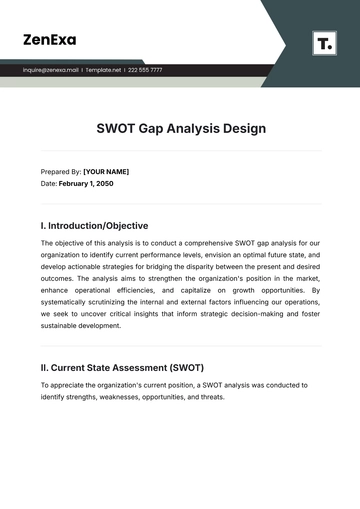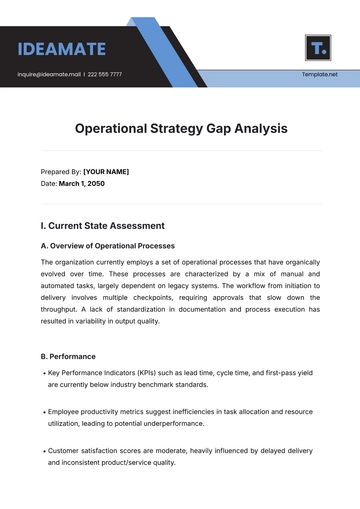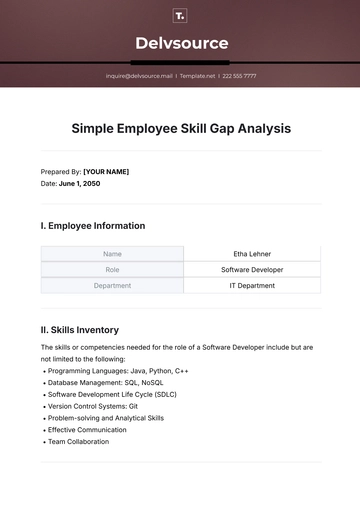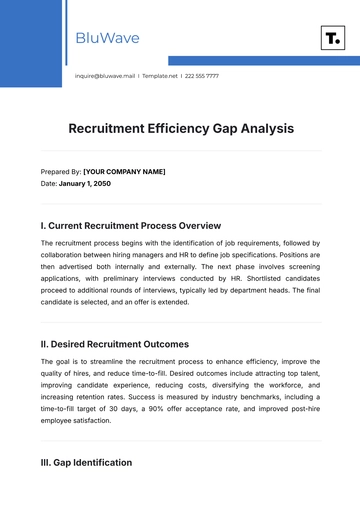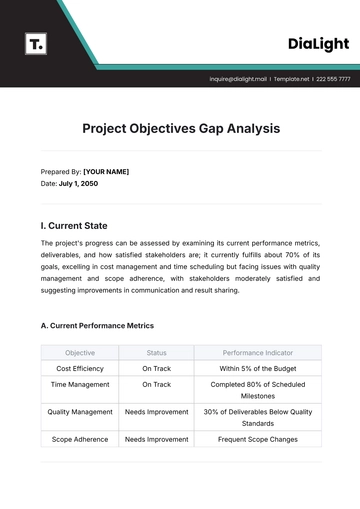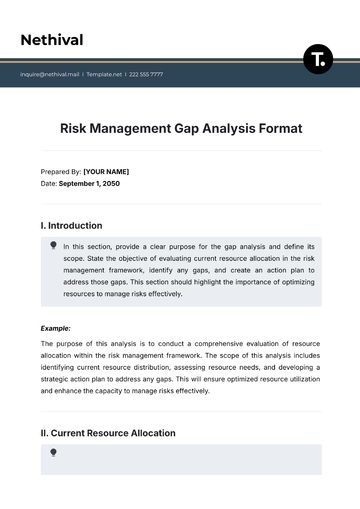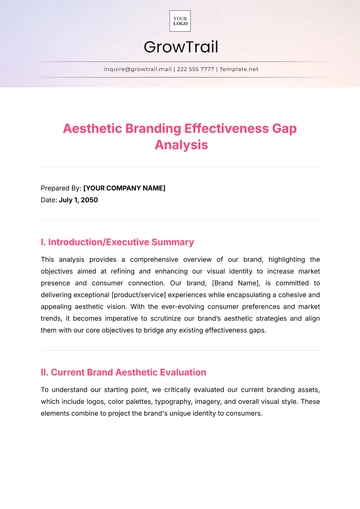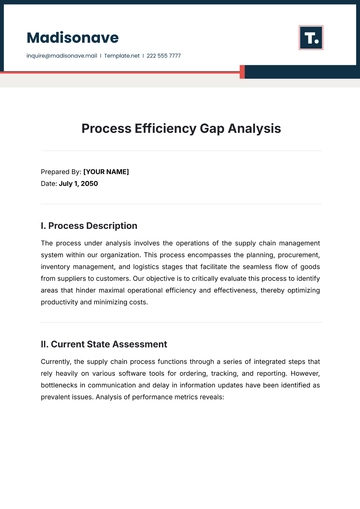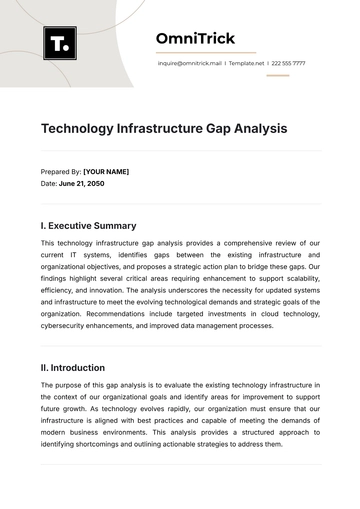Free Analysis of Post-Sale Customer Touchpoints

I. Introduction
Effective post-sale customer management is fundamental to maintaining a strong customer base and nurturing brand loyalty. Post-sale interactions between customers and [Your Company Name] are often as important, if not more so, than the initial sale itself. This document delves into the various post-sale customer touchpoints to gain insights into how our company manages and enhances these interactions.
This Post-Sale Customer Touchpoints Analysis Document is a comprehensive assessment of our company's post-sale customer interactions. The quality of these interactions is instrumental in maintaining customer satisfaction, fostering loyalty, and ultimately driving success for our business. By closely examining and optimizing these post-sale touchpoints, we can enhance the overall customer experience.
II. Post-Sale Customer Touchpoints
Post-sale customer touchpoints represent the critical phase of the customer journey that occurs after a purchase has been made. These interactions are instrumental in shaping customer satisfaction, loyalty, and advocacy.
A. Customer Satisfaction Surveys
Customer satisfaction surveys are a cornerstone of post-sale touchpoints. These surveys are typically distributed to customers shortly after a purchase, aiming to gather insights into their experience. They play a pivotal role in gauging the overall satisfaction of customers with our products or services. The collected data helps in quantifying customer sentiment and identifying areas that require improvement. The Net Promoter Score (NPS) is often a key metric derived from these surveys, providing a snapshot of customer loyalty and potential for advocacy.
B. Support and Service Interactions
Post-sale support and service interactions are critical for addressing customer queries, resolving issues, and ensuring that customers receive the necessary assistance. These interactions are often the lifeline for customers facing challenges with their purchases. The effectiveness of support interactions directly impacts customer satisfaction and loyalty.
C. Product Training and Onboarding
For products or services that require a learning curve or where effective utilization enhances customer satisfaction, a well-structured onboarding process is essential. This touchpoint involves providing customers with the necessary knowledge, resources, and training to maximize the value of their purchase. An efficient onboarding process reduces customer frustration, accelerates product adoption, and fosters a positive initial experience.
D. Account Management
In B2B contexts, dedicated account managers play a pivotal role in post-sale interactions. These managers act as a bridge between the customer and the company, providing continuous support and building long-term relationships. Regular check-ins, proactive communication, and personalized engagement are critical aspects of effective account management.
E. Loyalty Programs and Rewards
Loyalty programs and rewards are post-sale strategies aimed at retaining customers and encouraging repeat business. These programs provide incentives for customers to continue doing business with us and potentially refer others..
F. Feedback Channels
Feedback channels are integral to post-sale interactions. These channels provide customers with the opportunity to share their thoughts, whether positive or negative. These insights are invaluable for understanding the customer's perspective and identifying areas that require improvement. Analyzing feedback helps in making continuous enhancements to products and services.
III. Data Collection and Analysis
Effective data collection and analysis are the backbone of any post-sale customer touchpoint strategy. Now, we dive deeper into the intricacies of collecting and analyzing data to gain insights into customer behavior, satisfaction, and expectations.
A. Quantitative Data
Quantitative data encompasses the numerical information gathered through various channels to measure and evaluate post-sale customer interactions. The key sources of quantitative data in this context include:
Customer Satisfaction Surveys: The cornerstone of post-sale data collection, these surveys provide structured, numerical feedback from customers. The key quantitative metrics here often include ratings on a scale or responses to specific questions, allowing for easy comparison and trend analysis.
Net Promoter Score (NPS): The NPS, derived from customer satisfaction surveys, is a critical quantitative metric that quantifies customer loyalty. It categorizes customers as promoters, passives, or detractors based on their willingness to recommend the company to others.
Support Ticket Statistics: Data related to support interactions, including the average response times, resolution rates, and the categorization of support requests. This data helps in quantifying the efficiency and effectiveness of support services.
Customer Retention Rates: Measuring how many customers remain engaged with the company over time provides a critical quantitative indicator of post-sale success. High retention rates indicate satisfied customers, while a decline may highlight areas for improvement.
Quantitative data is essential for benchmarking, tracking trends, and comparing performance against predefined KPIs. These metrics allow us to assess the effectiveness of post-sale touchpoints objectively and make data-driven decisions.
B. Qualitative Data
While quantitative data provides numerical insights, qualitative data delves into the emotional and narrative aspects of customer interactions. It captures the 'why' behind the numbers and offers a more holistic understanding of the customer experience. Key sources of qualitative data in post-sale interactions include:
Direct Customer Feedback: Customer comments, suggestions, and opinions gathered through various channels, such as emails, chat, social media, and direct feedback forms. Qualitative data from customer feedback is a goldmine of insights into the intricacies of their experiences.
Sentiment Analysis: Analyzing the sentiment expressed in customer feedback can help categorize responses as positive, negative, or neutral. Sentiment analysis provides a deeper understanding of the emotional aspects of the customer experience.
Text Mining: Going beyond sentiment analysis, text mining involves extracting patterns, trends, and themes from qualitative data. It helps identify recurring pain points, feature requests, or areas of delight.
Qualitative data is invaluable for understanding the 'voice of the customer' and gaining insights into their motivations, frustrations, and expectations. It often informs the 'how' and 'where' of improvements in post-sale touchpoints.
IV. Key Findings
The collection and analysis of both quantitative and qualitative data yield key findings that guide decision-making and strategy development. These findings are essential for assessing the current state of post-sale customer interactions and identifying areas for enhancement. Based on the data, some of the key findings includes:
Customer satisfaction is generally high, with an average NPS score of [88].
Support and service interactions are efficient but could benefit from improved personalization to make customers feel uniquely valued.
While product training and onboarding processes are effective, there is room for expansion and improvement, especially for more complex products.
Account management, especially for B2B customers, is positively impacting retention rates.
The loyalty program, while in place, needs to be more visible and engaging to encourage customer participation.
Feedback channels have provided invaluable insights for product and service improvements and should continue to be monitored closely.
V. Recommendations
In light of the insights derived from ou analysis, it is advised that a strategic course of action be adopted, encompassing the ensuing recommendations:
Personalize support and service interactions to make each customer feel valued and recognized.
Expand and enhance product training and onboarding materials, especially for complex products, to reduce barriers to product adoption.
Invest in better tracking and engagement strategies for the loyalty program to ensure customer retention and participation.
Continuously monitor NPS scores and customer retention rates to ensure they remain high, taking necessary actions if any decline is noted.
Regularly analyze feedback channels to identify trends, address pain points, and make continuous improvements in products and services.
VI. Conclusion
Post-sale customer touchpoints are a fundamental element of maintaining and enhancing customer satisfaction, loyalty, and advocacy. Although there are some areas that need improvement, based on the key findings we were able to attain a favorable impression on our customers. Understanding and optimizing these touchpoints is integral to improving the overall customer experience, fostering long-term customer relationships, and contributing to the sustained success of our business.
- 100% Customizable, free editor
- Access 1 Million+ Templates, photo’s & graphics
- Download or share as a template
- Click and replace photos, graphics, text, backgrounds
- Resize, crop, AI write & more
- Access advanced editor
Understand your customers’ journey with less hassle with our Analysis of Post-Sale Customer Touchpoints Template! This customizable analysis from Template.net is editable, allowing you to conduct a detailed analysis of your post-sale customer touchpoints. The AI Editor Tool simplifies the editing process, saving you time and resources! Edit right away!



